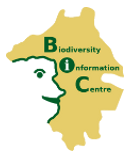The Nandi Forests yet unexplored by tourists
Forest surrounding
|
In 1999 human population was around 371 inh./kmē next to the Nandi Forests, i.e. the area is much less densely populated as compared to Kakamega Forest. Also here rural livelihood can be described by small-scale cultivation including tea. Besides, the Nandi people are known for 'showering in milk' due to their efforts in milk production. The area is also known for contributing to the world-famous runners of Kenya. Kapsabet is the regional market centre and 'hub' with a still very much African flavour. The Tiriki, who are found adjacent to the western parts of South Nandi Forest, are related both to the Luhya and the Nandi in terms to their cultural life and traditions.
Tourist attractions
|
| 1 / 2 |



 Activities
Activities





